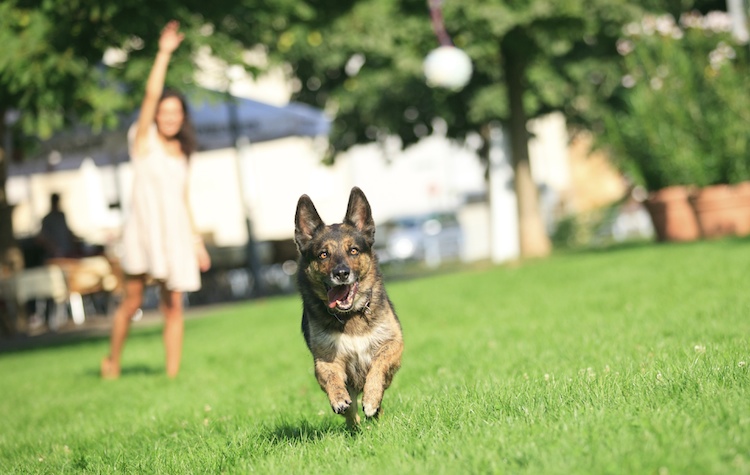
Exercise is one of the best ways to combat obesity — a serious health issue that experts say contributes, in part, to the increase in cancer rates in our dogs. But keeping your dog’s weight under control is not the only benefit of regular physical activity.
Making sure your dogs get enough exercise will also help keep their muscles toned, their heart and lungs strong, improve digestive health and provide ample oxygen to the brain for optimum cellular function. Exercise also helps to reduce or eliminate common behavioural problems such as destructive chewing, digging or scratching, hyperactivity, unruliness, rough play and excessive barking and whining.
Many of us lead a more sedentary lifestyle that’s not conducive to giving our pets the adequate amount of exercise or mental stimulation they need for a healthy mind and lean body. The good news is there are many ways to keep your pet’s body moving whether you choose to exercise along with your dog or not. Who knows, maybe getting out with your dog will help you improve your health too!
Some of the many different ways you can exercise your dog include power walking — going at a fast enough clip, about a 12-15 minute mile — running, hiking, playing fetch or Frisbee, swimming, getting out to the off-leash park and organized sports such as agility, flyball or dock diving. You can also exercise your dog’s brain with food puzzle toys, playing hide-and-seek, hunting for dinner, obedience and trick training and chew toys.
The amount and type of exercise your dog needs will depend on his size, age, breed, and general health. Larger breeds and working dogs need more exercise than smaller or toy breeds. Senior dogs require less intense exercise, so short, frequent walks will keep their heart healthy and strength training exercises will help with flexibility, balance and keeping their weight under control.
Some breeds have special concerns with respect to exercise. Deep-chested, narrow-bodied breeds such as German Shepherds, Dobermans and Great Danes are prone to bloat and should not be exercised right after meals. Breeds with short or flat noses (brachycephalic breeds) such as Pugs, Boston Terriers, Bulldogs or Pekingese may have trouble breathing with strenuous exercise. And young dogs, especially large breed puppies should not partake in continuous jogging, running or jumping as they are prone to joint problems such as hip dysplasia, arthritis and cruciate ligament injuries.
As a general rule, your dog needs a minimum of 20 minutes of continuous exercise three times a week.
Before starting any new exercise routine, please check with your veterinarian to make sure your dog has no health issues that may be aggravated by exercise and ask for suggestions about activities you can do together.
As a general rule, your dog needs a minimum of 20 minutes of continuous exercise three times a week. Simply walking your dog at a leisurely pace and letting him stop and sniff, is not enough exercise nor is letting your dog out in the back yard, without supervision, and expecting him to get a cardiovascular workout on his own — he’d rather sleep.
And waiting for the weekend to make up for not giving your dog enough exercise during the week, is not a good idea — an unconditioned body can easily be injured and may lead to long-term joint damage. Consistent daily exercise is the best approach.
Here are several other factors to keep in mind when exercising your dog:
Sources:
This page has been reviewed by our Panel of Experts for accuracy. Our Panel of Experts is comprised of practitioners with varying specialities and perspectives. As such, the views expressed here may not be shared by all members of our Panel.
The content on this website is for informational purposes only and is not intended to be a substitute for professional veterinary medical advice, diagnosis or treatment.